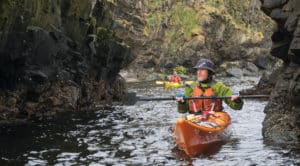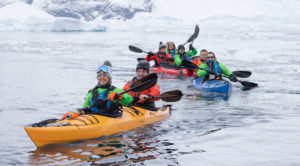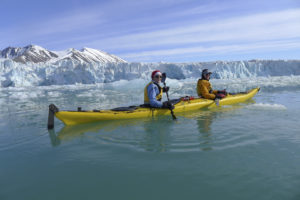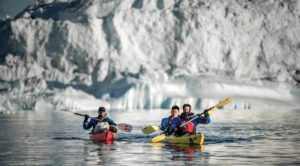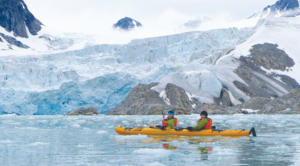Home > Expeditions > Wild Scotland
Wild Scotland
- 12 Days
- Departure/Arrival:
- Edinburgh, United Kingdom - Aberdeen, United Kingdom
- Voyage code:
- SCO018G
- Voyage type:
-
Discovery
- Ship:
- Greg Mortimer
- Price:
-
SOLD OUT
Summary
Discover the wild isles of Scotland, from the windswept Hebrides, inhabited for over 8,000 years, to the verdant Orkney Islands, where ancient Neolithic and Viking sites conjure images of civilisations long gone. Zodiac-cruise past sea-sculpted coastlines watching for dolphins, seals, and photograph seabirds in one of Europe’s largest seabird colonies. Visit charming villages, meet the friendly locals and maybe even sample a wee dram of Scotland’s finest.
Highlights
• Visit Britain’s highest sea cliffs at the UNESCO World Heritage-listed St Kilda
• Discover the Shetland Islands and their fascinating history
• Look for otters, dolphins and seals
• Discover some of Scotland’s remote and rugged islands, visited by few adventurous souls
Gallery
In true expedition style we encourage exploration and adventure, offering flexibility in challenging environments in a way that puts you among the action to see and do as much as possible. This itinerary is only a guide and subject to change due to ice and weather conditions.
Itinerary
Day 1 Edinburgh
Having made your way to Edinburgh, you will be met by a representative of Aurora Expeditions and transferred to our group hotel. Upon arrival at your included hotel, please visit the Aurora Expeditions hospitality desk to collect your luggage cabin tags and to speak with our ground operations team, who may have information to share with you about pre-embarkation or to provide you with information about where to dine, withdraw cash or purchase last minute items from a local pharmacy or supermarket.
The remainder of your time is at leisure. All meals today are at your own expense.
Accommodation: Courtyard by Marriott Edinburgh Hotel (or similar)
Day 2 Embark in Troon
After breakfast, check-out and bring your luggage to the foyer. Please place any items required today in your hand luggage as your main bag will be transferred to the ship.
Edinburgh awaits us this morning as our local guide welcomes us with stories of Scotland's capital city. Stretching just over one mile, five cobblestoned streets make up the walking precinct of the Royal Mile. Starting at The Palace of Holyroodhouse, the official residence of the British monarch in Scotland, we’ll step back in time to hear tales of princes, poets, and politicians as we stroll past some of Edinburgh’s most iconic buildings including the Church of Canongate and Scotland's own parliament house.
Perched atop an extinct volcano, Edinburgh Castle dominates the capital city’s skyline just as it has dominated Scotland’s long and colourful history. This instantly recognisable fortress is a powerful national symbol, and part of Edinburgh’s World Heritage Site. Note: entry to the castle is not guaranteed.
You’ll have time to explore the castle precinct and Royal Mile which are scattered with friendly pubs and charismatic restaurants (lunch own expense). Our two-hour transfer takes us to the west coast port of Troon where our expedition team will welcome you aboard the Greg Mortimer in the late afternoon.
Once onboard, settle into your cabin before our important briefings. We will set sail along Scotland's northwest coast in the evening and meet your expedition team and crew.
Days 3-4 Inner Hebrides
From golden beaches to jagged peaks, bleak moors and heather clad hills; from abandoned settlements to picturesque villages, our days in the Hebrides archipelago will be packed with variety. We may explore remote lochs beneath some of Britain’s most untamed mountains and wander between unusual rock formations. We may watch for whales, dolphins, otters, seals, and the increasingly rare basking sharks. Possibly we will land at an island reserve that is home to red deer and white-tailed sea eagles.
Kayakers will be introduced to their craft and will be briefed for their adventures, before picking up paddles to circumnavigate tiny islets or glide into narrow waterways that intertwine the islands. Hikers may opt for panoramic views from summits and ridges.
Early the next morning we will aim for the tiny island of Iona. Barely 5 kilometres (3 miles) long, Iona is renowned as the birthplace of Christianity in Britain. It is also a burial ground of early Scottish Kings. The Irish monk, St Columba and twelve disciples, landed here and founded a monastery in 563 CE. From this base, St Columba set about converting Scotland and much of Northern England to Christianity.
We plan to land on remote Isle of Eigg and on the rugged Isle of Skye for wonderful hikes among stunning wildflowers. Skye is a centre of Gaelic culture, and some islanders still speak the language. The wildlife, history, geology and beautiful scenery make it one of our favourite islands to explore.
We hope to make the following landings: The Cuillin Hills have earned a reputation as Britain’s most untamed and challenging mountains. The rocky jagged Black Cuillins attract rock climbers. The smoother conical granite peaks of the Red Cuillins are crowned with heather. We may land at Loch Scavaig in the heart of the Cuillins and take a short hike, perhaps to Loch Coruisk, for spectacular views and get a glimpse of the range’s grandeur. Keener hikers may be able to venture further afield, weather permitting. Meanwhile kayakers may paddle around Loch Scavaig, into Loch Coruisk. They may explore the island of Soay and an abandoned shark fishing station – all against the backdrop of classic views of the Cuillins.
Days 5-7 Outer Hebrides & Orkneys
From the Inner Hebrides we make our way to the Outer Hebrides – also known as the Western Isles – that stretch for 209 kilometres (128 miles) and look out on their western side to the Atlantic Ocean. Our first stop is at the Isle of Lewis, the largest and northern-most island in the Outer Hebrides. We plan to make a stop at Callanais, where archaeology buffs will be keen to see the fascinating group of Standing Stones, dating from around 3,000 BCE.
Weather permitting, we plan to land at the isolated archipelago (and World Heritage site) of St Kilda, where derelict crofts bear testament to the fortitude of islanders who once tended the unique Soay sheep and harvested seabirds for food—and to pay their rent in the form of wool, meat and feathers. The isles hold Europe’s most important seabird colony and is home to Britain’s highest sea stacks (rock columns
Orkney’s archipelago of 70 windswept islands, 10 kilometres / 6 miles north of the Scottish mainland, a rich tapestry of archaeology, history and wildlife awaits. We follow the passage of time—from 5,000-year-old World Heritage Neolithic sites, past relics from Vikings and reminders of World War II occupation—to present day crofting communities. Imposing sea cliffs teem with seabirds and cliff top paths beckon the keen hikers among us. Our kayakers use paddle-power to explore sections of Orkney’s fascinating coastline.
At the Knap of Howar on Papa Westray lies the earliest known house in Northern Europe, occupied by Neolithic farmers over 5,000 years ago. Here we are welcomed by the friendly locals. Enjoy the lively Scottish dance and folk ensemble, "Poor Man's Corner," hailing from Papa Westray, set to grace the local pub with their spirited tunes. Mingle and enjoy a few drinks, while listening to the captivating melodies and infectious rhythms.
Days 8-10 Shetland Islands
Britain’s most northerly islands lie almost 160 kilometres (99 miles) north of the Scottish mainland, at a similar latitude to the southern tip of Greenland, or Bergen in Norway. Kept relatively warm by the Gulf Stream, Shetland’s 100 islands experience almost 24 hours of daylight in summer. They abound with nature reserves and archaeological sites and offer a taste of traditional island life. We plan to explore some of the following sites:
Jarlshof is one of Shetland's best preserved and most complex archaeological sites. It was exposed by storms in the late 19th century. The Old House of Sumburgh, built here in the 17th century, was named 'Jarlshof' by Sir Walter Scott in his novel 'The Pirate'. The record of human occupation dates from around 3,200 BCE. Jarlshof’s main Bronze Age site is the house of a bronzesmith working around 800 BC. Clay moulds into which molten bronze was poured revealed that he was casting axe heads and short swords. It seems that Shetland suited early Norse settlers, for they quickly settled here and left their mark on Shetland's history for ages to come.
Mousa Broch, on the small uninhabited island of Mousa, is the best preserved of Scotland’s 570 brochs (fortified Iron Age towers). Storm petrels nest among its stones, which can be seen when visiting the broch at night. In daylight, a large colony of common and grey seals basks on its shores, and you may spot otter (Dratsi, in Shetland dialect).
Midway between Orkney and Shetland, Fair Isle houses a major European ornithological research station, and is also famous for knitwear and historic shipwrecks. About five kilometres by three kilometres / three miles by two miles in area, it is surrounded by impressive cliffs. The 70 or so islanders mainly live in traditional crofts on the more fertile low-lying southern part of the island.
A bird watchers’ paradise, Fair Isle lies on the intersection of major flight paths from Scandinavia, Iceland and Faroe. In summer, the cliffs teem with breeding fulmars, kittiwakes, guillemots, gannets, shags and puffins. The Isle is an excellent place to view seabirds, especially puffins at close range. Fair Isle also has over 250 species of flowering plants, including wetland flowers, rare orchids, alpine species and common wildflowers. We’ll be welcomed by the hospitable villagers and may take a hike or visit the museum. Grey and common seals inhabit these waters around Fair Isle, while sharp eyes may spot harbour porpoises, white-beaked dolphins, Atlantic white-sided dolphins, killer whales (orcas) and minke whales.
Situated along the western shores of Shetland's mainland, Papa Stour boasts some of the most striking coastlines in the region. Marvel at impressive caves, arches, stacks, and skerries. Papa Stour is a haven for walkers, wildlife enthusiasts, and those with an interest in archaeology, offering a diverse range of experiences.
Day 11 Kirkwall
Britain’s most northerly islands lie almost 160 kilometres (99 miles) north of the Scottish mainland, at a similar
Discover the rich history in Kirkwall, capital of the Orkney Islands. Initial impressions are misleading, as the harbour area looks modern, but the narrow winding streets and lanes of the old town, which have remained relatively unchanged over the centuries are appealing. Everything west of Kirkwall is known as West Mainland, an area of rich farmland, rolling hills and moorland, with dramatic cliffs along the Atlantic coastline. Some of the main archaeological attractions we may see include the standing Stones of Stenness, the Ring of Brodgar, and the chambered tombs of Maes Howes that to this day still have unresolved mysteries.
You can choose from a selection of shore excursion options that best suits your interests and level of fitness:
Option 1: Orkney Treasures - Skara Brae
Embark on a journey through the serene countryside, venturing into the World Heritage heartland of the Orkney’s, celebrated for its abundance of prehistoric archaeology. Traverse past the awe-inspiring Standing Stones of Stenness and make a pause at the Ring of Brodgar—an immense ceremonial stone circle with roots reaching back nearly 5000 years. Continue your exploration to the ancient village of Skara Brae, a settlement that has withstood the test of time for 5000 years. Delve into its rich history, thoughtfully interpreted at the visitor centre, and witness the remarkable dwellings unveiled from beneath the sand dunes by storms a mere 150 years ago. A short 200-meter stroll leads to Skaill House, a distinguished manor and Orkney's finest. Constructed in 1620 by Bishop George Graham on the grounds of a farmstead believed to date back to the Norse period, Skaill House boasts a 400-year legacy. All 12 of its Lairds throughout history are interconnected, each contributing to the house's storied history and impressive collection. Immerse yourself in the captivating tales and artifacts within the walls of this historic manor, a testament to the enduring heritage of Orkney.
Option 2: The Heart of Neolithic Orkney
Pass through the gentle rolling landscape and into the Neolithic Heartland of Orkney; an area designated as a World Heritage Site due to its wealth of pre-historic archaeology. Stop at the Ring of Brodgar; a huge ceremonial circle of stones dating back almost 5000 years. Next take a short coach journey to marvel at the smaller, yet taller and more ancient Standing Stones of Stenness, currently the oldest known stone circle in Europe. Ponder upon its creation and hear of folk tales and traditions inspired by its mysterious and elusive magnificence. Wander along to Barnhouse, an ancient Neolithic village and part of Orkney’s UNESCO World Heritage Site. Walk among the houses and learn about everyday lives of the Neolithic people who built these structures. Pause to appreciate the serene bird hide nestled along Harray Loch, offering a tranquil interlude in nature. Conclude your day with a visit to St Magnus Cathedral, a testament to the Vikings' architectural prowess during their 500-year reign over the islands. This unique tour promises a fresh perspective, unveiling the lesser-explored facets of Orkney's Neolithic legacy and inviting you to connect with its mysterious and enduring history.
Day 12 Aberdeen
On arrival in Aberdeen, disembark in the early morning and bid a fond farewell to fellow travellers before a transfer to the airport to continue your journey.
Note: At the conclusion of the voyage, we recommend booking flights departing after 12.00 pm on the day of disembarkation in case there are delays.
Inclusions
- Transfer from airport to our group hotel on Day 1 transfer.
- One night’s hotel accommodation including breakfast, in Edinburgh on Day 1.
- Half-day tour in Edinburgh followed by a transfer to Troon, on Day 2.
- Onboard accommodation during voyage including daily cabin service.
- All meals, snacks, tea and coffee during voyage.
- Beer, house wine and soft drinks with dinner.
- Captain’s Farewell reception including four-course dinner, house cocktails, house beer and wine, non-alcoholic beverages.
- All shore excursions and Zodiac cruises.
- Educational lectures and guiding services from expedition team.
- Complimentary access to onboard expedition doctor and medical clinic (initial consult).
- A 3-in-1 waterproof polar expedition jacket.
- Complimentary use of muck boots during the voyage.
- Comprehensive pre-departure information.
- Port surcharges, permits, and landing fees.
- Wi-Fi. Please note we travel to remote regions and therefore the connection can be unreliable.
Note: A $15 USD per person per day gratuity for the crew is automatically added to your onboard account. It is at your discretion if you would like to remove the tip (or adjust the amount) when you settle your bill. It is not necessary to tip the expedition team members. This gratuity amount is included for suites as part of their ‘Suite Benefits’.
Exclusions
- International or domestic flights – unless specified in the itinerary.
- Transfers – unless specified in the itinerary.
- Airport arrival or departure taxes.
- Passport, visa, reciprocity and vaccination fees and charges.
- Travel insurance or emergency evacuation charges.
- Hotel accommodation and meals – unless specified in the itinerary.
- Optional excursions and optional activity surcharges.
- All items of a personal nature, including but not limited to alcoholic beverages and soft drinks (outside of dinner service), gratuities, laundry services, personal clothing, medical expenses or phone charges.
Included Activities
Bird watching
Lectures on wildlife, our environment, history and destinations
Near shore cruises
Photography
Polar plunge
Trips ashore
Walking
Whale and mammal spotting
Zodiac cruises
Add-on Activities
Sea Kayaking
From AUD $1,250.00/pp
Sea Kayaking Vacations One of the most exhilarating ways to experience Antarctica, the Arctic and beyond. Sea kayaking holidays in …
Sea Kayaking
Sea Kayaking Vacations
One of the most exhilarating ways to experience Antarctica, the Arctic and beyond.
Sea kayaking holidays in the humbling wilderness of Antarctica, the Arctic, and some of the world’s most biodiverse regions, are guaranteed to stir your soul. Paddle around brash ice and near icebergs of all shapes and sizes, absorbing the majestic scenery as it unfolds before you.
This Kayaking Program was created by kayakers for kayakers! Our program style offers the chance to develop and enhance your skills and to connect with our expert guides and your fellow Expeditioners. Participating with the small group through your voyage will minimise wasted time with briefings and equipment tryouts and maximise time on the water.
All of our Expert Guides are professional kayak guides, who have led trips around the world, specialise in the Polar Regions and have been chosen for their passion for the sport.
Kayaking is one of the best ways to access and intimately explore the beautiful coastlines we visit and make the most of your time in the wild and remote destinations we visit.
You have the option to discuss with the guides what you want out of your trip and they will help with recommendations on when to paddle, when to go ashore and when it’s possible to do both in one outing.
Our purpose-built ships have been designed with the activities in mind, each equipped with dedicated space for our high-end equipment, including Kokatat dry suits, Seals sprayskirts, PFD’s from Astral and paddles from Werner and Aqua Bound.
Please note:
- Kayakers must be 14 years or over. A Parent or Guardian’s signature is required for participants between 14 and 18 years old.
- There is upper size limit in the drysuits we provide onboard. If you cannot find a suitable size within our range and you would like to bring your own, please contact our Activity Specialist to discuss in more detail.
- Travel Insurance is mandatory on all Aurora Expeditions voyages. An additional policy or premium may be required to ensure you have adequate coverage for including this activity.
Sea kayaking holidays in the humbling wilderness of Antarctica, the Arctic, and some of the world’s most biodiverse regions, are guaranteed to stir your soul. Paddle around brash ice and near icebergs of all shapes and sizes, absorbing the majestic scenery as it unfolds before you.
This Kayaking Program was created by kayakers for kayakers! Our program style offers the chance to develop and enhance your skills and to connect with our expert guides and your fellow Expeditioners. Participating with the small group through your voyage will minimise wasted time with briefings and equipment tryouts and maximise time on the water.
Kayaking is one of the best ways to access and intimately explore the beautiful coastlines we visit and make the most of your time in the wild and remote destinations we visit. You have the option to discuss with the guides what you want out of your trip and they will help with recommendations on when to paddle, when to go ashore and when it’s possible to do both in one outing.
Our purpose-built ships have been designed with the activities in mind, each equipr with dedicated space for our high-end equipment, including Kokatat dry suits, Seals sprayskirts, PFD’s from Astral and paddles from Werner and Aqua Bound.
‘Getting out amongst it’ is our philosophy, and that is exactly what we do. Weather permitting, the sea kayaking activity is normally available anytime the other expeditioners go out. Rather than travelling large distances, our aim is to ensure you see as much as possible. We paddle between 5 to 15 kilometres (2 to 4 hours) per outing, often offering a combination of both kayaking and onshore landings so you won’t miss out.
Each small group of kayakers (up to 10 per guide) will have their own intimate exploration of the small hidden bays and coasts that are inaccessible to Zodiacs. Of course, we also make time for your own shore excursions and wildlife encounters.
The elements play an important role in our sea kayaking program. It is important that you have an adventurous attitude and understand that the weather can impact our kayaking time.
The level of experience required differs slightly depending on the region you are visiting. For all trips, a basic level of sea kayak experience is required, equivalent to that gained in a half day Paddle Australia “Intro Sea Skills” course. You do not need to be an expert or know how to roll; however, it is encouraged that you are comfortable in a sea kayak in the ocean, and are required to be able to swim, have a moderate level of physical fitness, and no medical conditions that prevent you from safely participating. We are happy to assist you with any preparation you may need or want prior to your voyage.
Our guides do not offer instructional classes for beginners. Therefore, the sea kayaking option is unsuitable for complete novices. If your experience is limited, we encourage you to contact us to discuss your suitability. There is often ample time to gain the required experience before you depart.
Your guide will assess your ability on the initial paddle, and if you have insufficient experience, he or she reserves the right to restrict your participation in rougher conditions.
You should be fit enough to paddle for 15 minutes without stopping at a moderate pace, for up to three hours at a time with breaks. We encourage a moderate level of fitness and recent kayaking experience as much as possible.
Polar regions
During summer the air temperature in the Antarctic Peninsula, Greenland and Spitsbergen are generally above freezing but can range from -4°C to +5°C / 24.8°F to 41°F. The water temperature in the polar regions is close to freezing and winds sweep off the glaciers, making paddling a chilling experience. Scotland, Iceland, Norwegian coasts are warmer with water temperatures of around 12°C / 53.6°F. In the Antarctic Peninsula, and Svalbard we often paddle in sheltered locations with generally calm conditions. In exposed locations places like South Georgia, we often encounter stronger wind and more challenging paddling conditions. Your guides will be constantly searching for a way to get you out safely and enjoyably.
Temperate regions
The northern waters in Scotland, Faroes, Iceland and Norway are warmer than the polar regions but water temperatures of around 12 °C/ 53.6°F mean you may opt to wear your paddle jacket on a warm, sunny day or our dry suits on a cool day. Surf landings are not likely, but you must be capable of paddling in a small swell or wind chop, with winds up to 20 knots. With that being said, we will not paddle if wind conditions are too strong and there is no sheltered area for paddling.
Tropical regions
In Costa Rica and Panama, April is the end of the dry season. The shoulder season begins in May, bringing increased humidity. Afternoon rain showers are possible in May with temperatures ranging from 26-36 °C (80- 96 °F). Winds are generally light at this time of year. The water temperature ranges from 27 -29 °C. Surf landings are not likely, but be prepared to paddle in a small swell or wind chop, with winds up to 15 knots. Again, we will not paddle if wind conditions are too strong and there is no sheltered area for paddling.
The Sea Kayaking activity is available for an additional surcharge and includes guided excursions and kayaking equipment. Fares for this activity start from US$900, AU$1,250, £460 or €550.
Prices are indicative only and are variable. They are calculated based on the days of voyage, ability to carry out the activity and exchange rates.
Aurora Expeditions will be providing kayak booties and dry suits. Below is the measurement chart for the sizes we provide. If you prefer to bring your own dry suit for this activity, please contact our Activity Specialist to discuss the suitability of your equipment.
If you cannot find a suitable size from the options available and you do not have your own custom dry suit, unfortunately we will be unable to accommodate you for this activity.

Top reasons to choose Sea Kayaking
See wildlife unobtrusively
Kayaking is one of the best ways to spot rare wildlife, from penguins to puffins.
Better access
Access intimate bays and coves that bigger crafts can't reach.
Knowledgeable guides
Our experienced sea kayak guides will help bring your chosen destination to life.
Become an expert
Hone your kayaking skills and gain a hobby for life!
Make friends
Become lifelong friends with your small group of like-minded adventurers.
Stay fit on your holiday
Being active every day on your holiday means you don't have to feel guilty about being spoilt by our expert chefs!
Enhance your experience
Add another layer to your once-in-a-lifetime holiday and make the most out of your time in some of the most remote places on earth.
It's fun!
Have the time of your life exploring some of the wildest places on earth from the water.
Sea Kayaking FAQs
There are 20 paces available and our guide to paddler ratio is 1:10 and we provide an accompanying safety Zodiac.
Kayakers must be 14 or over. Parent or Guardian’s signature is required for participants between 14 and 18 years old.
Sea kayaking is offered in place of regular shore excursions. We aim to paddle as often as possible. Depending on the voyage, we generally aim to paddle twice per day.
We will give you a drybag for extra clothing, binoculars and anything that needs to be kept dry. You should also carry a water bottle. We recommend bringing a waterproof camera or phone, or ensuring you have a good quality waterproof case.
If the weather changes during our outing we will head back to the ship and perhaps join a shore excursion. The ship’s captain, expedition leader and kayak guide always maintain close contact to ensure a safe paddling experience. We do not attempt to paddle too far away from the ship. The emphasis is on experiencing the destination rather than travelling long distances.
The kayaks are made with a hard plastic and are easily paddled in swell and conducting shore landings, and through small patches of brash ice. We manoeuvre around the larger ice chunks and floes.
Polar regions
Kayaking in the poles offers a unique wildlife viewing experience. In Antarctica, we have many opportunities to encounter penguins, seals and whales, and occasionally we may even spot leopard seals or orcas. In the Arctic, we’ll paddle under nesting bird colonies, past massive glaciers and around large icebergs, however we maintain a safe distance from polar bears and walruses. Our guides carry rifles and flare guns in the Arctic to ensure your safety against polar bears.
Temperate regions
Kayakers in wild temperate regions will have a unique wildlife experience, with possible encounters with seals and basking sharks. You will have the opportunity to view some of the largest sea bird colonies in the northern hemisphere.
Tropical regions
The superb wildlife-viewing opportunities are endless in the astonishingly biodiverse nature reserves we visit. Kayaks offer a unique opportunity to view marine and land mammals, coral reefs, tropical fish, sea birds and an astonishing range of rainforest birds. We will bring our snorkelling gear with us during our paddles and take advantage of any opportunities to view marine life up close.
In the unlikely event of a capsize, your experienced guide will assist by righting the kayak, stabilising it then pumping it out. Paddlers will re-enter with the guide’s help, or with a support Zodiac. With drysuits and warm clothing underneath you will be comfortable in cold water for up to half an hour. Note that the kayaks have separate compartments with bulkheads, which means they will float after a capsize.
No. Each kayaking place is for one person only. We value a program style that maintains participants through trip to maximise skill progression, group bonding and dynamics, and minimise wasted time with briefings and equipment tryouts.
Contact Us
Staterooms & Prices
Extension Tours
Other expeditions you may like
Scotland, Jan Mayen & Svalbard
Encompassing some of the wildest, most rugged outliers of the North Atlantic Ocean and the High Arctic Archipelago of Svalbard,
Coming soon...
Cairngorms National Park Explorer
Hiking in the Cairngorms National Park is a special experience. Listed by National Geographic as one of the top 50
Coming soon...
Trekking the West Highland Way
Walk the picturesque banks of Loch Lomond, hike among rugged mountain peaks and gentle glens, and maybe even sample a
Coming soon...
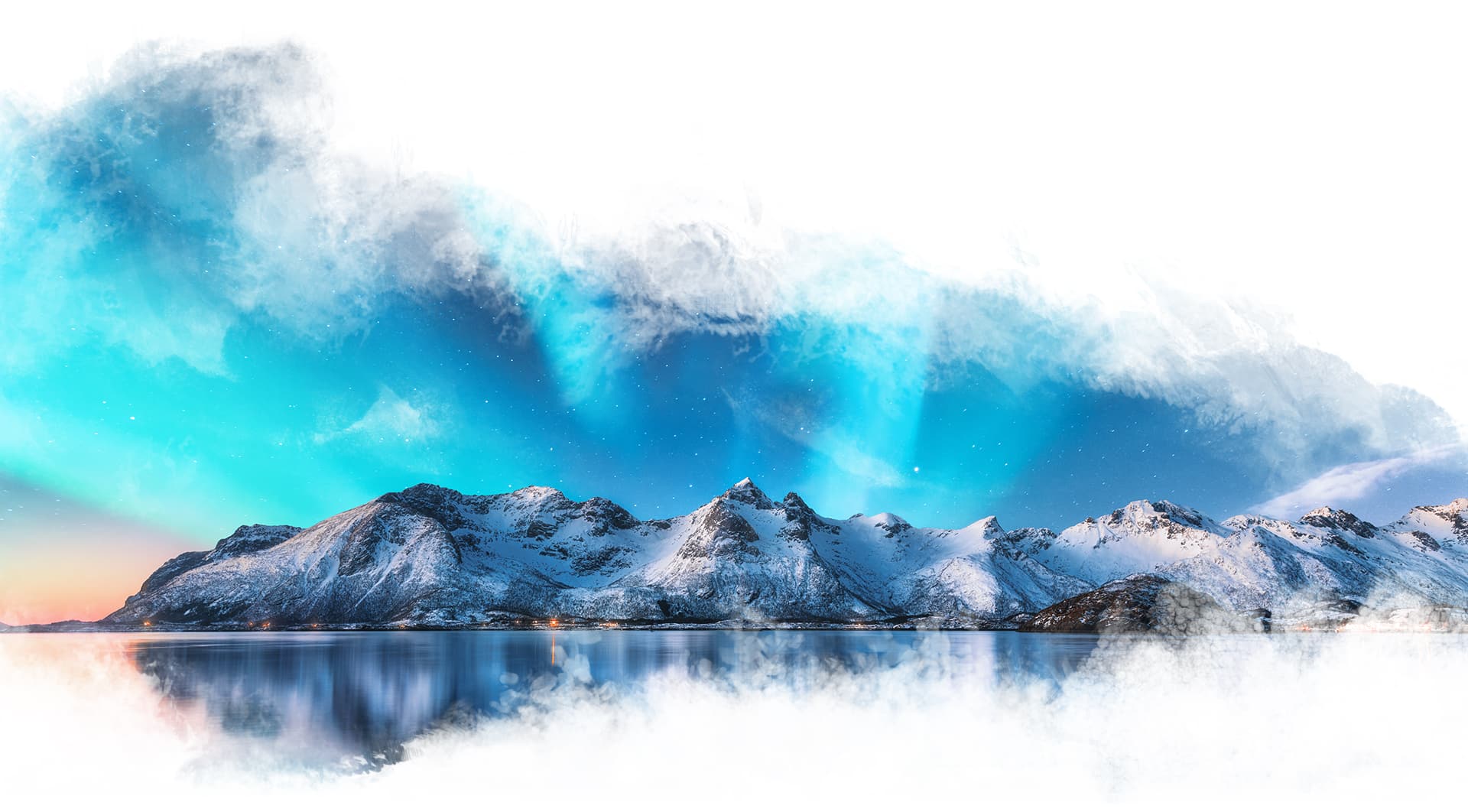
*Terms & Conditions apply. Valid on select ship voyages only. Offer is valid on new bookings only aboard the Greg Mortimer, Sylvia Earle or Douglas Mawson which must be booked and deposited by 30 September 2024. Promotion is subject to availability at the time of booking and capacity controlled. The promotion is only available in conjunction with the back to back voyage discount or the loyalty program offer, and not available with any other offer. The promotion can be withdrawn at any time and is not redeemable for cash. Normal booking terms and conditions apply. To confirm your booking, a completed booking form and non-refundable deposit of $2,500 pp in the booking currency is required within 7 days of reserved berth/s. Additional terms and conditions may apply. Please see full terms and conditions.
^Terms & Conditions apply. Additional 5% discount valid on both voyages but two voyages must connect back to back in terms of dates to be eligible. Offer is valid on new bookings only aboard the Greg Mortimer or Sylvia Earle. Promotions are subject to availability at the time of booking and capacity controlled. The promotion is only available in conjunction with early bird voyage discount or the loyalty program offer, and not available with any other offer. The offer can be withdrawn at any time and are not redeemable for cash. Normal booking terms and conditions apply. Please see full terms and conditions.


